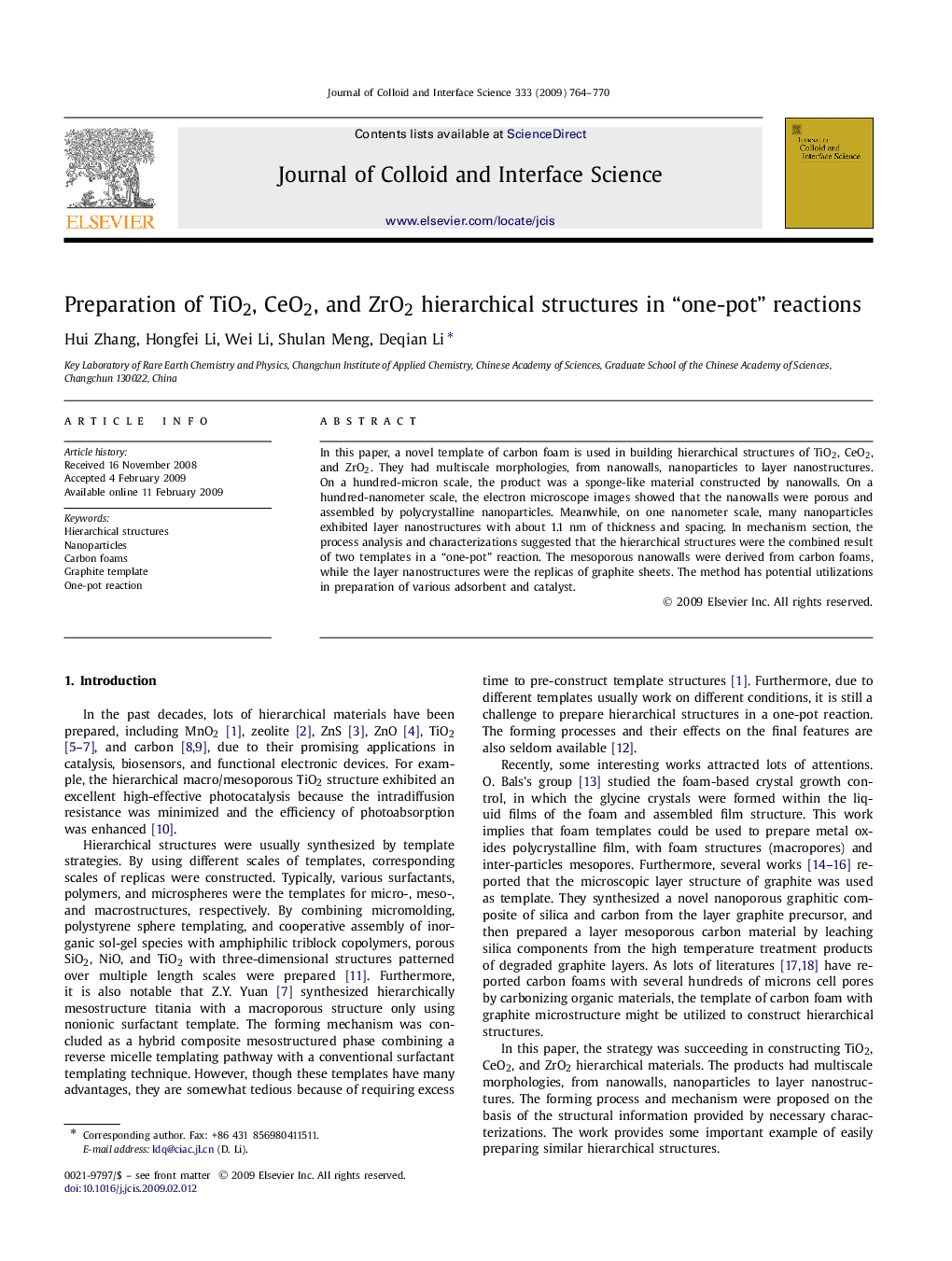| Article ID | Journal | Published Year | Pages | File Type |
|---|---|---|---|---|
| 610427 | Journal of Colloid and Interface Science | 2009 | 7 Pages |
In this paper, a novel template of carbon foam is used in building hierarchical structures of TiO2, CeO2, and ZrO2. They had multiscale morphologies, from nanowalls, nanoparticles to layer nanostructures. On a hundred-micron scale, the product was a sponge-like material constructed by nanowalls. On a hundred-nanometer scale, the electron microscope images showed that the nanowalls were porous and assembled by polycrystalline nanoparticles. Meanwhile, on one nanometer scale, many nanoparticles exhibited layer nanostructures with about 1.1 nm of thickness and spacing. In mechanism section, the process analysis and characterizations suggested that the hierarchical structures were the combined result of two templates in a “one-pot” reaction. The mesoporous nanowalls were derived from carbon foams, while the layer nanostructures were the replicas of graphite sheets. The method has potential utilizations in preparation of various adsorbent and catalyst.
Graphical abstractIn this paper, hierarchical metal oxides were prepared in a “one-pot” reaction. The structure had multiscale morphologies, from nanowalls, nanoparticles to layer nanostructures. The forming mechanism was discussed.Figure optionsDownload full-size imageDownload as PowerPoint slide
